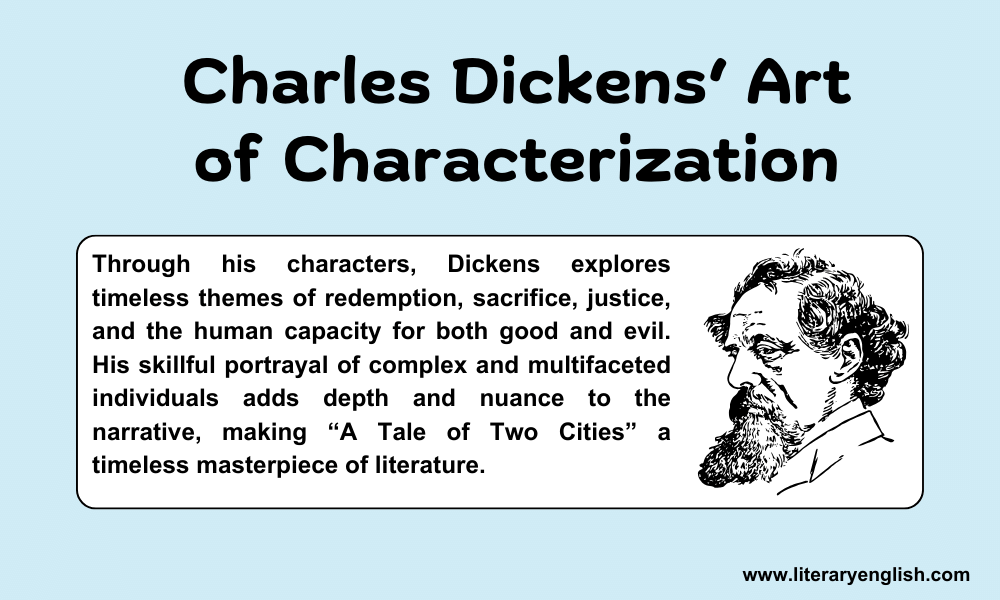Charles Dickens was indeed a master of characterization, and “A Tale of Two Cities” is a prime example of his skill in creating complex and compelling characters. Let’s delve deeper into Dickens’ art of characterization in the novel:
Charles Darnay:
Dickens bases the virtuous Charles Darnay partly on himself, using shared initials to suggest a deeper connection between author and character. This choice allows Dickens to imbue Darnay with qualities he admires or aspires to. Darnay’s relationship with Sydney Carton serves as a reflection of Dickens’ own internal struggle between his honorable and negative sides. Through this dynamic, Dickens explores themes of self-sacrifice, redemption, and the complexities of human nature. By portraying Darnay as a character who renounces his aristocratic heritage and embraces a new life in England, Dickens may also be reflecting his own beliefs about social justice and equality.
Dr. Manette:
Dr. Manette serves as another character through which Dickens reflects aspects of his own life. Like Dickens’ father, Dr. Manette experiences imprisonment and undergoes emotional and psychological turmoil as a result. Dickens parallels Dr. Manette’s career as a physician and his advocacy for social improvement with his own career as a journalist and social reformer. Through Dr. Manette’s character, Dickens explores themes of redemption, trauma, and the pursuit of justice. The dual identity of Dr. Manette, as both a prisoner and a respected physician, mirrors Dickens’ own experiences of navigating between different social classes and roles in society.
Mr. Stryver:
Mr. Stryver may be based on a lawyer Dickens knew, allowing Dickens to critique the legal profession and its ethical shortcomings. By portraying Stryver as unscrupulous and rude, Dickens highlights the corrupting influence of ambition and self-interest. Through Stryver’s character, Dickens offers a commentary on the societal attitudes and behaviors that contribute to injustice and inequality. Stryver’s lack of integrity serves as a contrast to characters like Darnay and Carton, who embody virtues of selflessness and moral courage.
Love and Relationships:
Dickens also explores themes of love and familial relationships through characters like Sydney Carton and Lucie Manette. Carton’s self-sacrificing love for Lucie reflects Dickens’ own romantic experiences, particularly his infatuation with Ellen Ternan. Lucie’s unwavering devotion to her father, Dr. Manette, parallels Dickens’ own close relationship with his father. Through Lucie’s character, Dickens portrays the enduring bond between parent and child, as well as the power of love to inspire acts of compassion and sacrifice.
In summary, Dickens’ art of characterization in “A Tale of Two Cities” involves drawing upon elements of his own life, experiences, and observations to create richly textured characters that resonate with readers. Through these characters, Dickens explores timeless themes of redemption, sacrifice, justice, and the human capacity for both good and evil. His skillful portrayal of complex and multifaceted individuals adds depth and nuance to the narrative, making “A Tale of Two Cities” a timeless masterpiece of literature.
